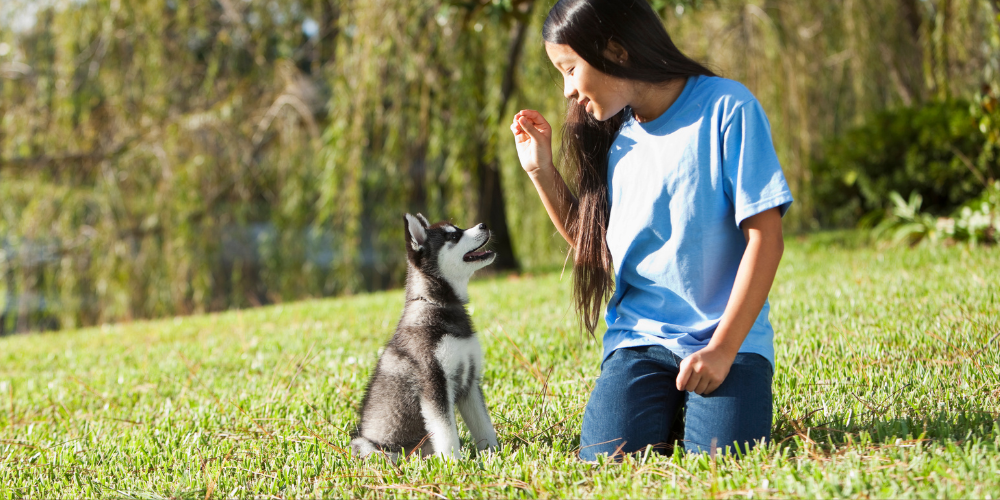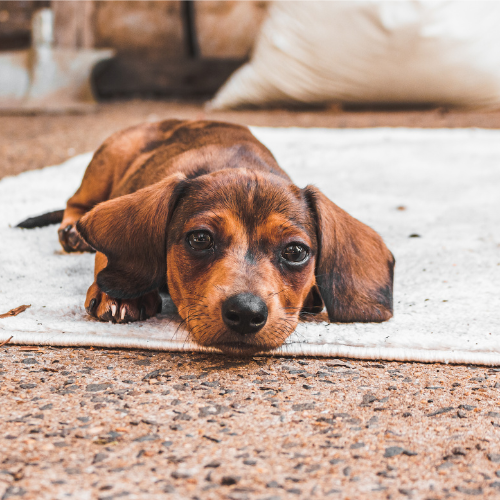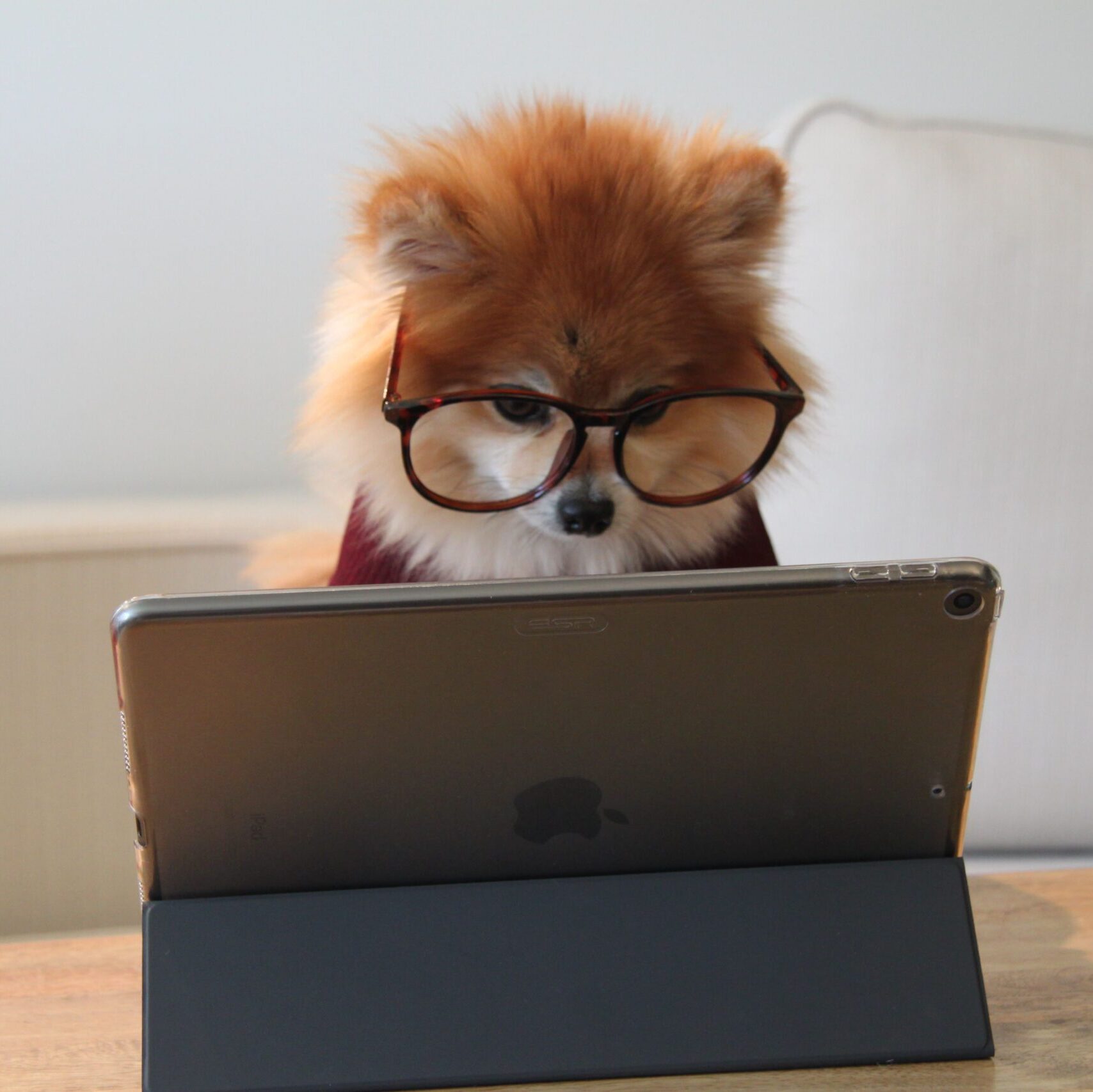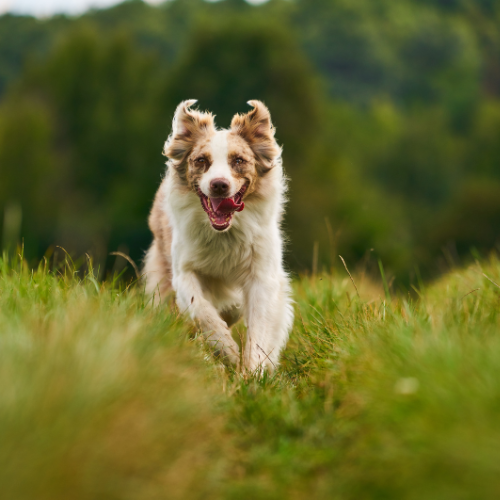September 26, 2023
Does your puppy lack manners, and instead act like a crazed demon from hell?
You’re not alone! Puppies don’t come hardwired to sit, stay, and chill on the couch.
Puppies are like newborn babies, and need to be taught, loved, and nurtured.
Both aren’t born potty trained. They both want to put everything in their mouths. And they both don’t sit still, at least not for long.
So how do you teach your puppy good manners, and where do you even start?!

1. Reward good behavior
The best way to start building good puppy manners is to reward behaviors that you find acceptable.
For example:
To teach your puppy to “check in” and give you eye contact, you would simply give her a reward every time she looks at you.
Each reward tells her “yes! I want more of that behavior!”
You’ll start to see your puppy looking at your more and more. Then, you can use it as a building block for training other behaviors, like checking in with you on a walk.
When you reward behaviors your puppy will perform them more often, and more predictably.

Reward-based training, or positive reinforcement training, has been heavily researched, is based on scientific evidence, and is widely accepted as the best way to train by professionals like the American Veterinary Society of Animal Behavior (AVSAB).
This is why I encourage food in training, and why rewarding behaviors is so important. Because it works!
2. Reward consistently
When teaching a new behavior one of the most important pieces is to build a reliable reinforcement history.
We can do that by sticking to a continuous reinforcement schedule, which means:

You reward your puppy every single time.
For example: You ask puppy to sit. Puppy sits. You give puppy a reward. Every time.
Don’t be stingy on treats or rewards. The continuous delivery of rewards act as pieces of communication to your puppy that specific behaviors yield rewarding consequences.
You want your puppy to think that good manners, like sitting, predict treats and not… nothing.

When you go to work, do you expect to be paid? Would you perform your duties for free or for a pat on the back? No. Don’t expect your puppy to do the same.
At this point you might be wondering, but I don’t wan to give rewards forever.
You won’t ever completely cut out rewards, for the same argument above. But eventually when the behavior is reliable and strong, you can vary when you deliver rewards. Don’t worry about that piece yet.
When you are teaching a new behavior, stick to the rule of rewarding every time!
3. Teach replacement behaviors
What the heck does that mean?
Easy! If your puppy is doing something you don’t like, teach them a new behavior.
That behavior should be different in that it can’t be performed simultaneously as the unwanted behavior. You might hear trainers referring to this as a DRI (differential reinforcement of an incompatible behavior).
For example:
Your puppy is jumping up during greetings, and you don’t like that behavior.
As a positive reinforcement trainer, I would follow a training plan to teach a new behavior:
- Sit for greetings (if puppy is sitting, they cannot also be jumping).
- Go to a mat and sit or down-stay for greetings.
- Go get a toy and play a game of fetch before greetings.
These examples demonstrate how training a mutually exclusive behavior can eliminate jumping up simply because the puppy can’t do both at the same time.


I never use punishments, force, fear, or pain to change behavior that I don’t like. Those “techniques” have been proven to cause more harm than good, as well as not address the real issues.
Plus, would you rather hurt your dog in hopes that they stop a behavior, or teach them something else to do, but in a positive, fear-free, healthy, and proven way?
4. Build good puppy behaviors at home first
I’ve seen new puppy parents feel defeated once they take their puppy out into the real world. All of their training falls apart. The puppy is distracted by the environment and has zero interest in their guardian or treats.
That’s totally normal and to be expected.
Think of how overwhelmed you are when you step off the plane to a foreign country. There are new sounds, smells, languages, scenery, and people. That feeling is exactly what your puppy feels just stepping off of your front lawn or entering their first cafe.
So, how do you train your puppy to sit, stay, leave it, or walk sweetly on leash once you get out your front door?
Stick to a training plan and build distractions slowly. Know that you might have to go backwards in a training plan, in order to move forward again.
For example: Teach your puppy to sit at a coffee shop.
- Train your puppy to sit in your home.
- Train outside in your front yard.
- Train at the coffee shop after allowing your puppy to sniff and explore.
- Train at the coffee shop as soon as you arrive.

That’s a very rudimentary plan, but it’s meant to get the point across that you shouldn’t start training at the coffee shop on step one. You must build up the behavior in lower distraction settings first.
As a certified dog trainer, I can write you a step-by-step training plan to help you reach your goals, and build good manners with your puppy.
Basic manners to teach a puppy
Everyone’s circumstances are different. You might live on a farm, in an apartment building, or in a house surrounded by woods. You’ll want to think about what specific behaviors would benefit you and your puppy.
But here are some common manners for puppies to start with.
Sit
- For greetings.
- Teach as a replacement behavior for jumping.
- Use before crossing the steet.

Down
- For greetings
- Also can be used as a replacement for jumping.
- Teach a down-stay.
Leave it/Drop it
- Great practice for impulse control.
- Can be used for leaving dangerous or valuable items.
Check in/Eye contact
- Can be used on walks to keep puppy’s attention.
- Can be used to begin “coming when called” training.
- Can be used when training in more distracting environments.
There are so many behaviors that you can start training your puppy to build good manners. These are just a few that I start with, and then build off of. Consult with me if you want to work on puppy manners!
How long does it take to teach puppy manners?

There isn’t a timeline to how long it takes to train a puppy. Factors such as, your goals, how often you train, and your puppy’s plasticity to learn all play a role.
If you have goals in mind for what you’d like to teach your puppy, then consulting with a positive reinforcement dog trainer would be beneficial. They can create training plans for you to follow, teach you how to train, or train your puppy for you!
Just know, that training isn’t a linear process. There are peaks and valleys. Some days your puppy might excel, and other days she might forget everything she learned. As long as you’re tracking in a positive direction, then you’re doing it right!
What is normal puppy behavior?
Puppies are full on energy and life!
Nipping, biting, chewing, zooming, and barking are all normal behaviors.
When teaching puppy manners we don’t want to suppress normal behaviors, but channel them in a more appropriate way.
Here are a few ways to do that:

- Provide plenty of quiet time and opportunities to nap.
- Provide different types of chews (bones, bullysticks, frozen toys).
- Stuff and freeze work-to-eat toys (Kong, LickiMat).
- Allow ripping, tearing, & dissecting of stuffie toys.
- Play tug and chase with rope toys or a flirt pole.
- Feed dinner in a puzzle toy.
- Train for 5 minute blocks throughout the day.

You can do it!
Puppy training is hard. It’s exhausting. And it goes by quickly. Build good puppy manners and behaviors from the start.
- Reward good behavior
- Be consistent with giving rewards.
- Teach replacement behaviors.
- Build good puppy manners at home first, then add in distractions.
Working with me, a positive reinforcement and certified trainer, can help kickstart teaching you and your puppy good manners. I can also help with behavioral issues such as potty training, chewing/destruction, biting, fear, leash pulling, and basic puppy manners and obedience.

Check out my puppy manners programs
If you’re adopting a dog or brought home a puppy check out my Puppy Prep Zoom.
It’s a virtual session where you can ask me, a professional dog trainer, any questions. We’ll chat about how to puppy-proof your home, socialization, and potty training.

My Puppy Socialization Program focuses on safe socialization.
The socialization period is time sensitive and super important to focus on, so if your puppy is between 8-16 weeks please contact me or another qualified positive reinforcement trainer to get started.

My last program is the Wildflower Puppy Program, which focuses on obedience training and manners. We’ll establish a solid foundation of good behavior that you can build on, or work through any behavioral issues.
Want some more free educational information? Check out my other blog posts, or follow me on Instagram (@wildflowerdogtraining_)
About Me
I’m Lauren, a positive reinforcement dog trainer in Denver, Colorado with Wildflower Dog Training.
I earned my Certificate in Training and Counseling (CTC) from The Academy for Dog Trainers in 2022.
I use positive reinforcement and force-free training.
All of my training is based on the science behind animal learning and behavior.

Leave a Reply Cancel reply
popular blog posts
Lauren Zimniski of
Wildflower Dog Training offers
dog & puppy training in Denver, CO
view our service area
Lauren@wildflowerdogs.com




post comments